
Japanese Wood Burning 3 Best Reasons for Shou Sugi Ban
Shou sugi ban is a process that involves applying heat to the surface of the wood, which creates a layer of protective char. The treatment, however, comes with certain pros and cons, which you need to keep in mind. The benefits of this wood treatment are as follows: 1. It's Durable
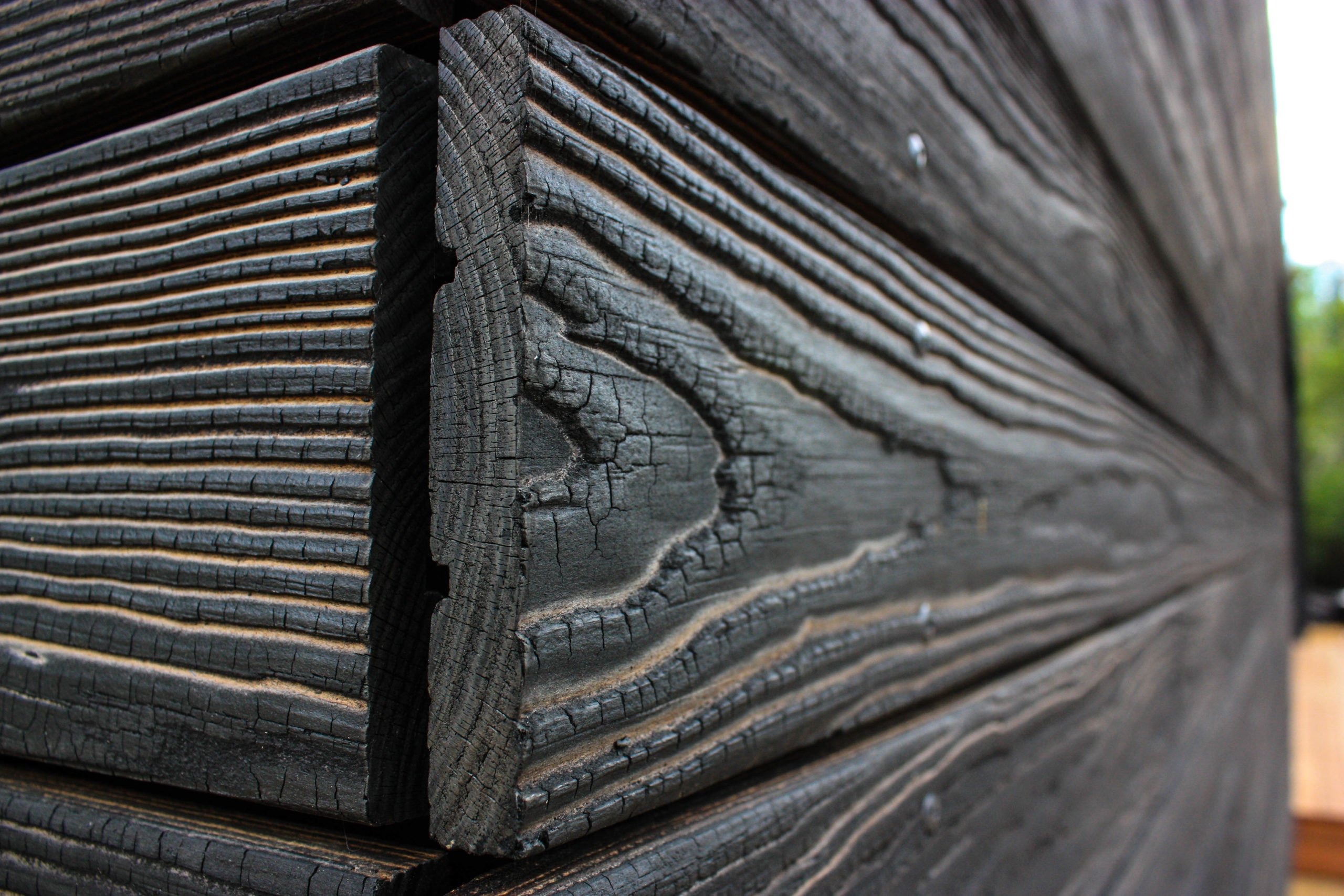
6 Reasons Why Shou Sugi Ban is the Hottest Trend in Architecture Kebony USA
(512) 385-1812 Contact Us Shortly after Delta Millworks began burning wood in 2007, we realized we were reviving the Japanese tradition of shou-sugi-ban.

Shou Sugi Ban Cardinal Red Staining wood, Wood art, Wood siding
Originating in 18th century Japan, Shou Sugi Ban is a particularly striking method of preserving wood by charring it with fire. Originally called Yakisugi in Japanese, we now refer to it as Shou Sugi Ban (interestingly, due to a botched translation). This technique has been used for centuries in Japan and is growing in popularity around the world.

CPI Office SSB Shou sugi ban, Charred wood, Ceiling cladding
Sugi Ban wood is often the solution for the façade of a house, farmhouse or sauna, or for a terrace or interior. Our Sugi Ban wood is an ideal choice for façades, terraces, interiors, fences, railings, walkways and roofs. We cater to individuals and property developers, delivering orders in various sizes. Our wood is prepared, burnt and oiled.

SHOU SUGI BAN GALLERY — URBAN TIMBER
Shou sugi ban wood is known for its remarkable durability and longevity, with an estimated life expectancy of over 80 years when appropriately maintained. This ancient Japanese technique involves charring the wood's surface, making it highly resistant to rot, pests, and environmental damage. Additionally, the use of shou sugi ban supports.

Shou sugi ban (yakisugi) deck completed on 30+ year old cedar wood that was reclaimed from a
What Is Shou Sugi Ban? Shou sugi ban is a Japanese term that means "charred cedar board." True to its name, shou sugi ban involves charring cedar planks, then burnishing the burnt wood with wire brushes and sandpaper before sealing it with natural oil.

One Minute Shou Sugi Ban Inspired Finish / DIY Stained Charred Wood YouTube
While shou sugi ban (焼杉板) originated in Japan in the 18th century primarily as way to treat cedar siding to make it weatherproof, the technique—which involves charring a wood surface to.
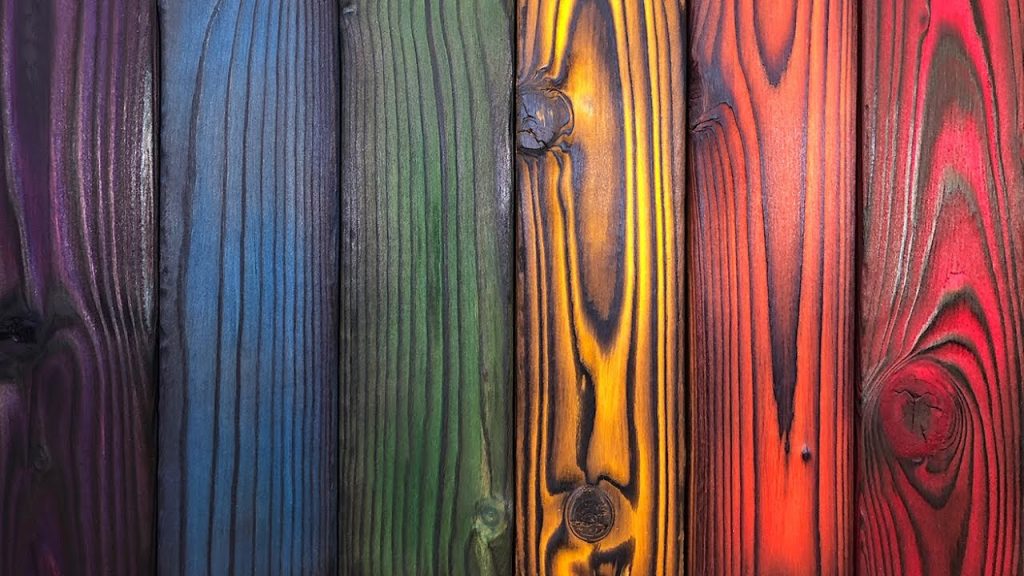
Shou Sugi Ban Burn Your Furniture the Japanese Way CAPTIVATIST
Shou Sugi Ban, also known as Yakisugi, is a decorative and architectural wood-burning technique that has been used for centuries in Japan. This traditional Japanese wood preservation method involves voluntarily charring wood to create a textural surface that is beautiful to look at—and that offers practical advantages when executed correctly.
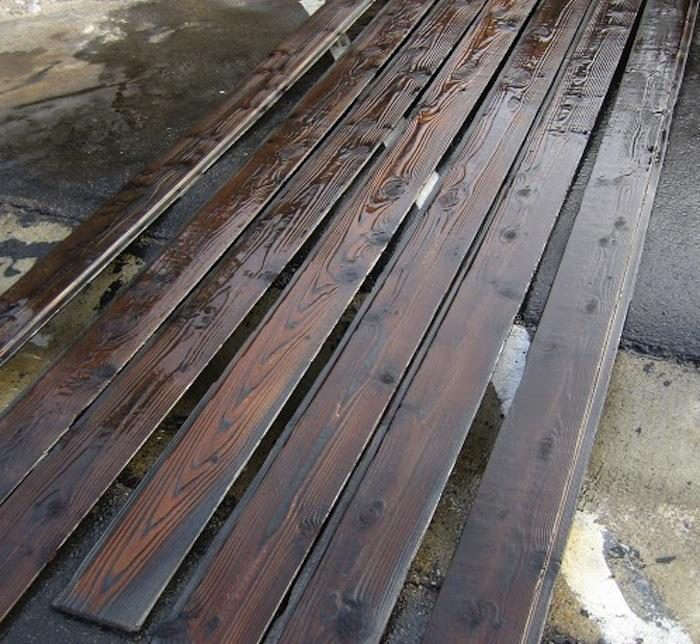
ShouSugiBan Wood Siding Remodelista
Known as yakisugi in Japanese, shou sugi ban is a centuries-old technique that dates back to 18th-century Japan where it was primarily used to protect rural homes and warehouses from fires.

Shou Sugi Ban Siding Authentic Japanese Yakisugi Nakamoto Forestry Shou sugi ban, Burn
The last benefit of Shou Sugi Ban wood is the lack of maintenance required to keep your finished project looking good. While some wall finishes or accent pieces require frequent upkeep, such as waxing, steaming, or oiling, Shou Sugi Ban paneling and siding can last up to 80-100 years without maintenance. How to Create Shou Sugi Ban Wood
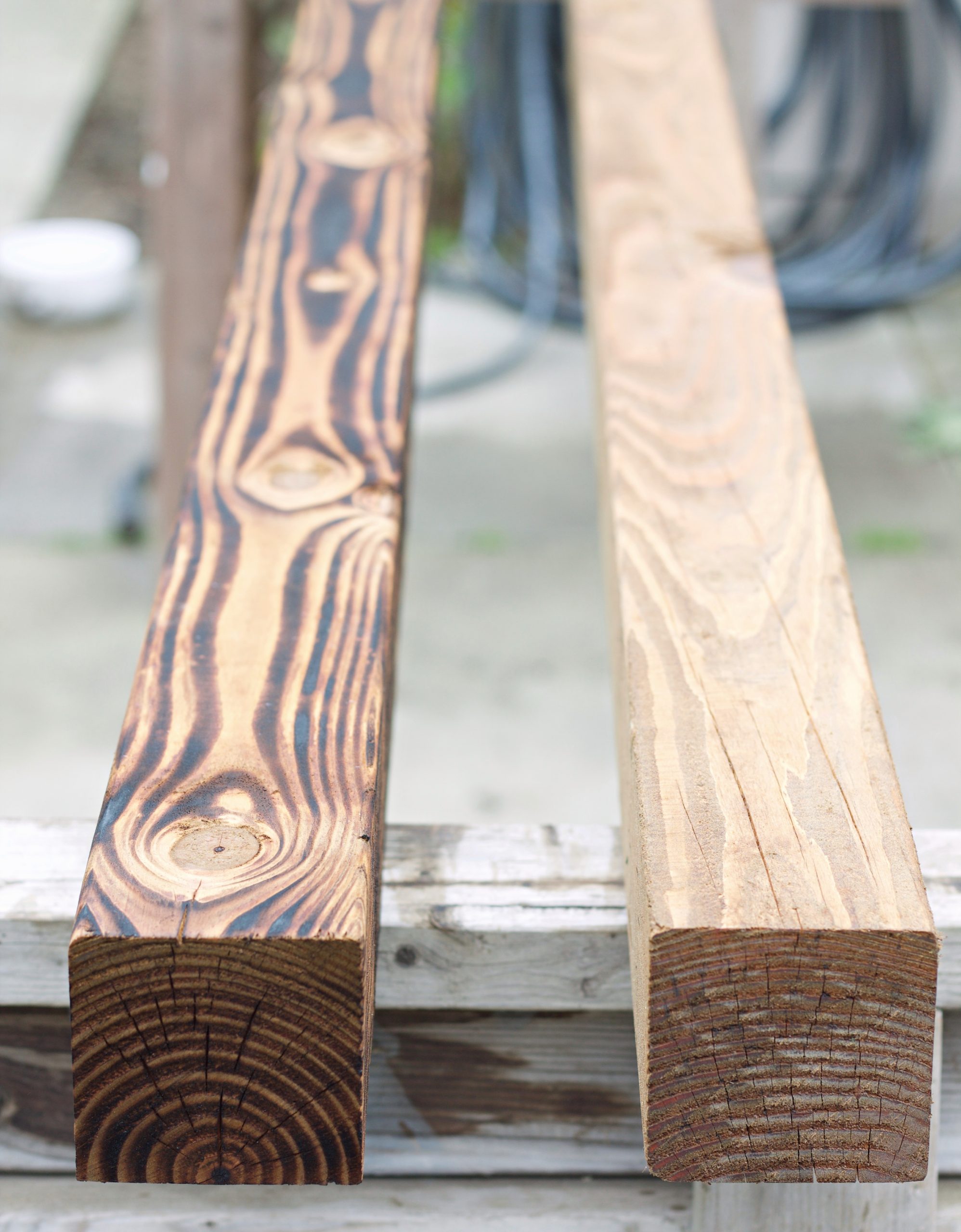
HowTo Burning Wood. Shou Sugi Ban & how it Upgrades your Projects
Shou sugi ban, or yakisugi, is a Japanese wood-burning technique that brings out the natural patterns of wood while also weatherproofing it. We've seen it trending everywhere in the design world. Even Chip and Jo used shou sugi ban in season four of Fixer Upper with this floating house makeover. Jennifer Boomer/Getty Images.

How To Select The Best Wood For Shou Sugi Ban YouTube
Shou sugi ban is an ancient Japanese technique for waterproofing and preserving wood. It involves charring the cedar wood surface until it turns black. While shou sugi ban originated for the purpose of weatherproofing wood, it has recently become popular as a rustic, textural design element inside the home.
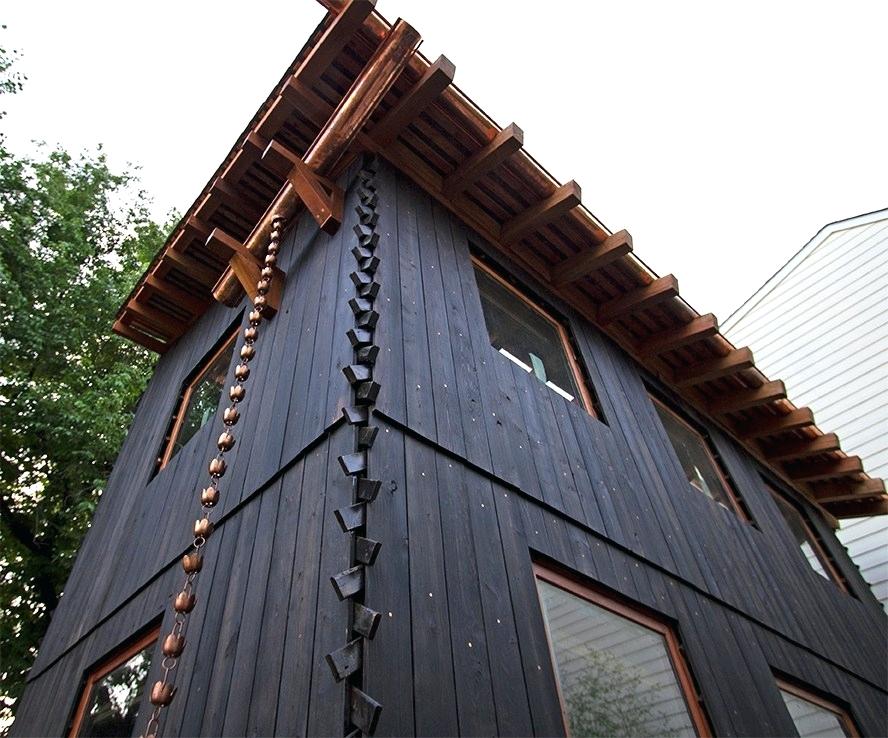
Shou Sugi Ban Black Pine Architects
About Nakamoto Forestry Shou Sugi Ban Wood: 5 Things Every Architect Should Know Before Specifying Today's architects face many challenges. Working with contractors and homeowners, researching new products like shou sugi ban wood, spending countless hours from conceptual drafts to detail diagrams, and of course managing their own business/profiles.
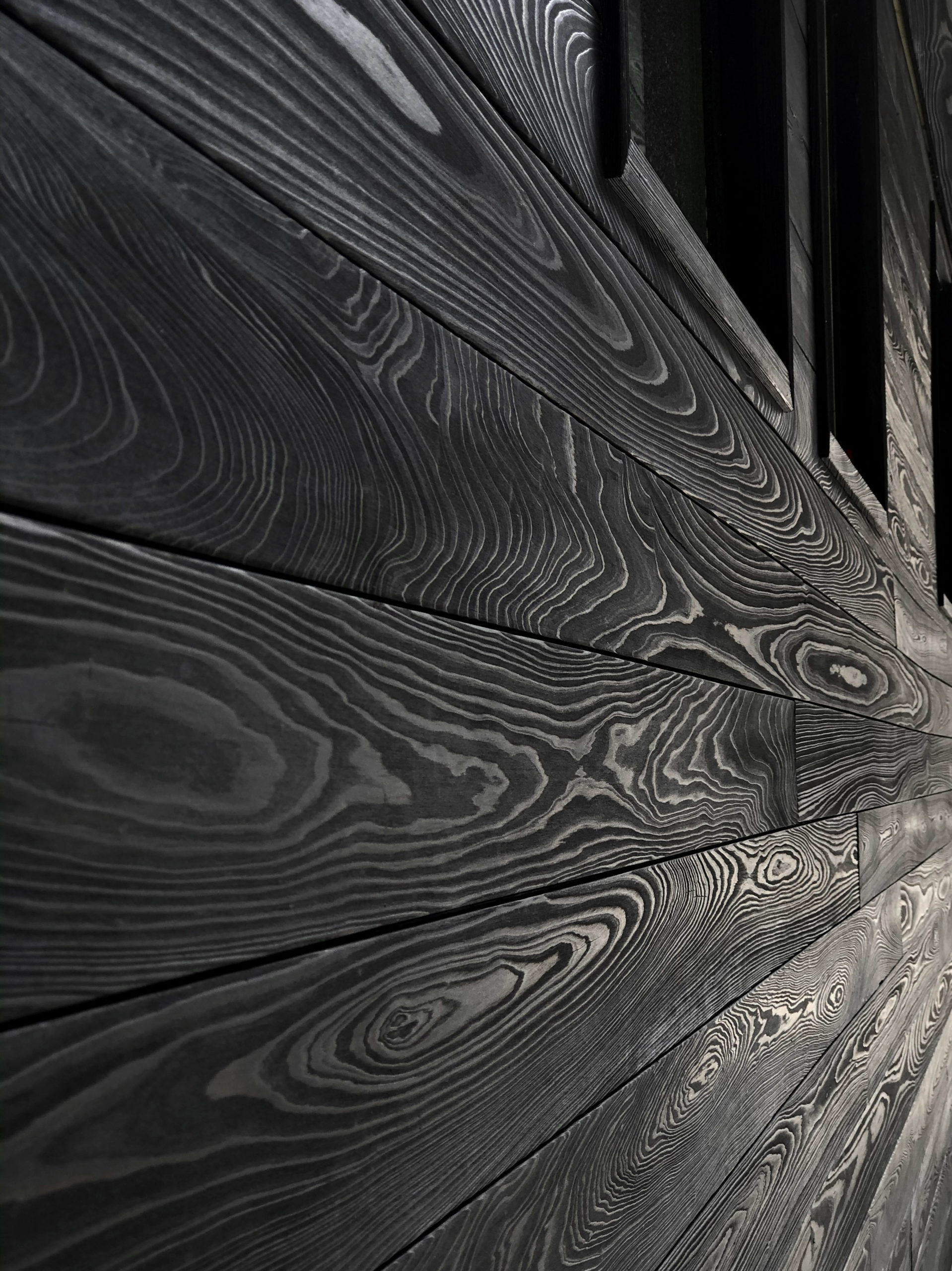
KURO shou sugi ban reSAWN TIMBER co.
Shou sugi ban Accoya® is the combination of high-performance modified wood and an award-winning charred technique. Inspired by an ancient Japanese process that dates back to the 1700s, shou sugi ban enhances the exterior performance and aesthetic value of natural wood products.

SHOU SUGI BAN GALLERY — URBAN TIMBER
Shou Sugi Ban, also known as Yakisugi, is a traditional Japanese method of wood preservation that has been used for centuries.It involves charring the surface of the wood with fire, which creates a unique aesthetic and improves its durability. In recent years, this technique has gained popularity in modern architecture for its striking appearance and sustainability benefits.
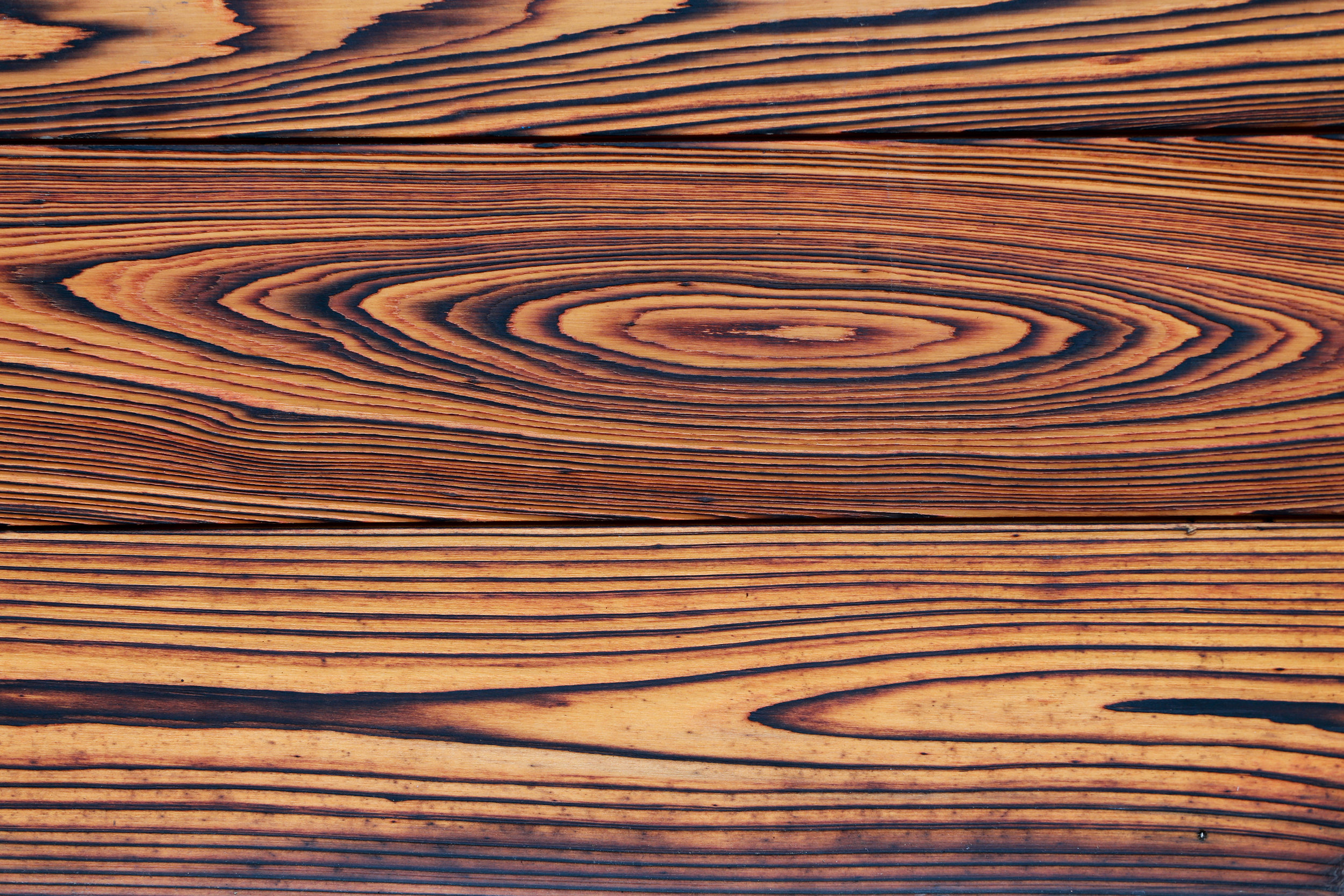
SHOU SUGI BAN GALLERY — URBAN TIMBER
reSAWN has modernized the ancient Japanese shou sugi ban process to create high performance, beautiful wood products. The designs vary greatly in aesthetics from a fully charred black to a light, subtle gray. reSAWN uses only the highest quality wood species to ensure unmatched performance in any suitable application.